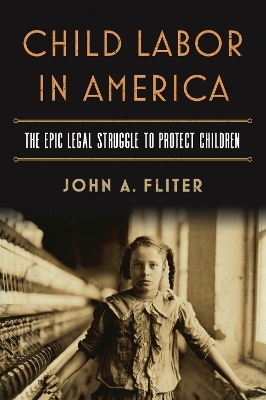
Child Labor in America
The Epic Legal Struggle to Protect Children
Seiten
2018
University Press of Kansas (Verlag)
978-0-7006-2631-1 (ISBN)
University Press of Kansas (Verlag)
978-0-7006-2631-1 (ISBN)
Child labor law strikes most Americans as a fixture of the country’s legal landscape, involving issues settled in the distant past. But these laws, however self-evidently sensible they might seem, were the product of deeply divisive legal debates stretching over the past century—and even now are subject to constitutional challenges. Child Labor in America tells the story of that historic legal struggle. The book offers the first full account of child labor law in America—from the earliest state regulations to the most recent important Supreme Court decisions and the latest contemporary attacks on existing laws.
Children had worked in America from the time the first settlers arrived on its shores, but public attitudes about working children underwent dramatic changes along with the nation’s economy and culture. A close look at the origins of oppressive child labor clarifies these changing attitudes, providing context for the hard-won legal reforms that followed. Author John A. Fliter describes early attempts to regulate working children, beginning with haphazard and flawed state-level efforts in the 1840s and continuing in limited and ineffective ways as a consensus about the evils of child labor started to build. In the Progressive Era, the issue finally became a matter of national concern, resulting in several laws, four major Supreme Court decisions, an unsuccessful Child Labor Amendment, and the landmark Fair Labor Standards Act of 1938.
Fliter offers a detailed overview of these events, introducing key figures, interest groups, and government officials on both sides of the debates and incorporating the latest legal and political science research on child labor reform. Unprecedented in its scope and depth, his work provides critical insight into the role child labor has played in the nation’'s social, political, and legal development.
Children had worked in America from the time the first settlers arrived on its shores, but public attitudes about working children underwent dramatic changes along with the nation’s economy and culture. A close look at the origins of oppressive child labor clarifies these changing attitudes, providing context for the hard-won legal reforms that followed. Author John A. Fliter describes early attempts to regulate working children, beginning with haphazard and flawed state-level efforts in the 1840s and continuing in limited and ineffective ways as a consensus about the evils of child labor started to build. In the Progressive Era, the issue finally became a matter of national concern, resulting in several laws, four major Supreme Court decisions, an unsuccessful Child Labor Amendment, and the landmark Fair Labor Standards Act of 1938.
Fliter offers a detailed overview of these events, introducing key figures, interest groups, and government officials on both sides of the debates and incorporating the latest legal and political science research on child labor reform. Unprecedented in its scope and depth, his work provides critical insight into the role child labor has played in the nation’'s social, political, and legal development.
John A. Fliter is associate professor of political science at Kansas State University. He is the coauthor of Fighting Foreclosure: The Blaisdell Case, the Contract Clause, and the Great Depression (Kansas).
| Erscheinungsdatum | 10.07.2018 |
|---|---|
| Verlagsort | Kansas |
| Sprache | englisch |
| Maße | 154 x 236 mm |
| Gewicht | 533 g |
| Themenwelt | Sachbuch/Ratgeber ► Geschichte / Politik ► Allgemeines / Lexika |
| Geisteswissenschaften ► Geschichte ► Regional- / Ländergeschichte | |
| Recht / Steuern ► EU / Internationales Recht | |
| Recht / Steuern ► Privatrecht / Bürgerliches Recht ► Familienrecht | |
| Sozialwissenschaften ► Politik / Verwaltung ► Politische Theorie | |
| ISBN-10 | 0-7006-2631-X / 070062631X |
| ISBN-13 | 978-0-7006-2631-1 / 9780700626311 |
| Zustand | Neuware |
| Haben Sie eine Frage zum Produkt? |
Mehr entdecken
aus dem Bereich
aus dem Bereich


